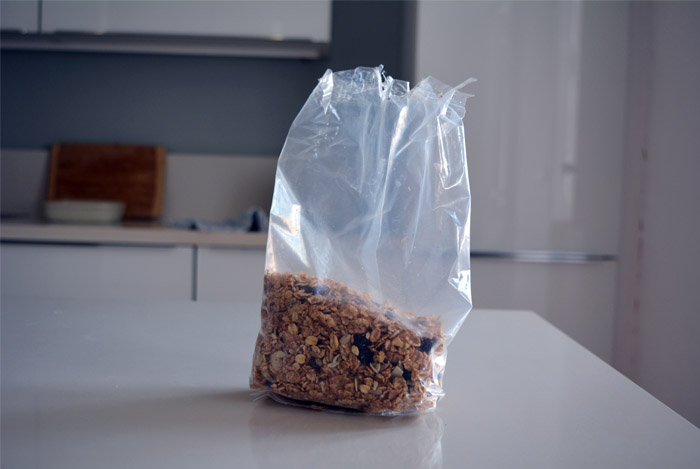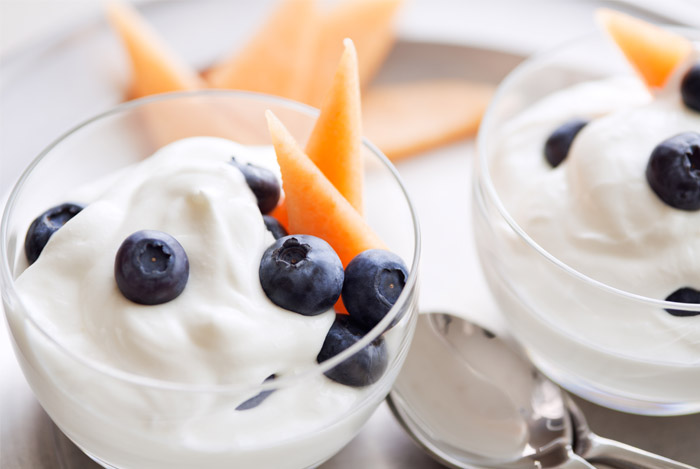Each year new food trends are released within the food industry based on consumer desires, requests, and nutrition studies that show certain food trends may offer significant health benefits.
For instance, we’ve seen this occur several years ago when most all food producers began marketing grain-based products with the slogan “whole grain” due to the desire consumers have had over the years to eat more products with whole grains.
And you can thank the latest nutrition research that shows eating whole grains carries significant health benefits over eating foods with processed (refined) grains.
How Food Trends Influence Our Purchases and Health:

One food trend you may also recognize is one we’ve seen within the last two years: the rise of coconut products everywhere!
This food trend surrounding the coconut madness was influenced by the news that the saturated fats from coconut are not as bad for us as we once thought, and how much use coconut has had in the industry for being a healthier replacement to dairy and animal-based ingredients in vegetarian and vegan foods.
This is the perfect example of how influential a food trend can be within the food industry and how it affects our choices at the store.
You’d have a hard time going to any supermarket these days and not seeing something with coconut in it or having at least 5-10 different types of high-quality coconut oil to choose from.
A decade ago, you’d have been lucky if you had found one type of high-quality coconut oil at your local supermarket and you sure wouldn’t have seen flavored coconut milk or yogurt alternative products!
Food trends can be both beneficial and detrimental to our health depending on how well those trends are backed by science to improve the nutrition of consumers. Many trends are also based on consumers’ desire for more natural food products.
For example, consumers now want more organic and non-GMO foods than they do highly processed and genetically modified foods sprayed with pesticides and chemicals. This, of course, isn’t a bad thing, but it doesn’t always guarantee that product is going to promote optimal health within our bodies.
When determining if a food trend is beneficial to one’s health, it’s important to look at if that food trend offers a total package of complete nutrition. A trendy food item can still be high in added sugar (even if it’s not refined, white sugar), inflammatory sources of saturated fat inflammatory oils (such as soybean or hydrogenated oils), and it may even still have many natural preservatives within it despite being better than more refined options.
Many food trends, however, have a great potential to benefit our health within context, as you’ll see below. Check them out and keep your eyes peeled for them next time you’re shopping at the store!
1. The Rise of Pulses

Pulses are another word for legumes which includes beans, peas, and lentils (which are all different types of legumes). Pulses are the highest source of plant-based protein among all animal-free options, and they also offer high amounts of iron, magnesium, and fiber.
They’re also higher in potassium than most whole grains and even many fruits and vegetables. This makes them a new food trend worth taking note of in 2016, even though pulses have been around for years.
Plant-based protein has received major growth within the food industry, specifically when that protein comes from a whole food, not a processed food like soy burgers, for example. This can be beneficial to help reduce the intake of red meat and saturated fats from animal products, but it can also be an easy way to take in more nutrition at the same time.
The new food trend being seen in the food industry is how pulses are not only being used for meatless options, but also grain-free options too. This is likely due to the requests for more grain-free products by consumers and may or may not be influenced by those who are on the Paleo diet. Pulses are not Paleo, but they are a grain-free option when it comes to producing grain-free pasta, crackers, etc. and they a great option for those on gluten and grain-free diets that want to enjoy some of their old, familiar foods once and awhile.
You’ll now see lentil crackers, lentil pasta, pea protein-based mayo in place of egg-based mayo, and more options with whole food sources of pulses at the store (such as dry and canned beans, peas and lentils).
Look for and purchase pulses such as black beans, lentils, peas, chickpeas (garbanzo beans), and other types you see and consider adding these to any soup, stew, or entree of your choice. You can even bake with them or use them in place of meat in casseroles and burgers if you’re looking to eat less meat or just want to add more plant-based nutrition to your plate.
2. Let’s Get Real: What’s Really in Our Food?

Another food trend that is swiftly growing within the food industry is the demand for more clarity on what is really in our food and how it is being produced.
Although many consumers do not care what is in their food and still continue to purchase highly processed options, others are refusing to do so and food producers are listening.
Major food companies such as General Mills have now made many of their products free of artificial sweeteners, colors, and controversial preservatives. They’ve also made it clearer to consumers what is in the food they’re buying and other companies are doing the same.
Companies are also being more real with consumers on their websites, social media outreach pages, and even on the fronts of packages for what goes into the products that make up their brand.
For instance, many of us want to know that our food was produced without genetically modified ingredients, others of us may want food produced in a sustainable manner, and most everyone wants more food options without so much refined sugar, chemicals, and preservatives.
Many companies that produce animal-based products are also offering consumers the ability to see how the animals are treated that are used to make those products and how “humane” that food product is as a result. Animal welfare is another trend within this health trend that has taken a rise the last year.
Even major stores such as Walmart, Costco, and Target are now offering more organic, certified humane, non-GMO, and natural products you wouldn’t have seen even a year ago. It’s obvious the demand for more honesty about what is in our food is becoming a food trend for 2016, and if there’s one you’re going to get on board with, this one would be a great one to start with.
3. A Little Spice is Nice, but More is Better

The trend for spicy foods is definitely something you’ll see in the stores this year, but it’s important to go for products without a high amount of preservatives, sugar, and sodium as the best options.
Spice is being added to many natural spreads, grain-based products like brown rice and quinoa, and you’ll even see savory yogurts and dips with spices being added to them becoming more available. Sriracha ketchup, mustard, and even chips can now be seen at the store, but before you go spending your money on this food trend, hold on just a minute.
The key to keeping this food trend healthy is to add spices to your foods yourself or choose products at the store made without a lot of ingredients. For instance, add some cayenne or chili powder to your next bed of brown or wild rice. Sprinkle a little turmeric into your quinoa or on your veggies. Add some five spice powder to your next bowl of chili, or include a little extra ginger in your next batch of oatmeal.
Spices offer significant health benefits when consumed in their whole food form. Turmeric is a fantastic source of curcumin and is a great source of anti-inflammatory properties.
Ginger is also a good spice to consume to reduce inflammation and it can be consumed in both sweet and savory dishes or even made into a hot tea. Cinnamon is also great for your blood sugar levels and can help add both sweetness and depth to any dish without added sugar.
Especially hot spices such as cayenne and chili pepper may even offer weight loss benefits by reducing appetite levels and improving metabolism, even if only by a little bit.
In general, it’s always best to add some spice to your food instead of buy processed food products with spices, however, if you see a new mustard or hot sauce offering extra spiciness, go ahead and indulge. Condiments such as these examples can make any healthy meal that much better.
4. Sugar Isn’t Always So Sweet

We all know that eating sugar isn’t good for us. That’s nothing new, of course, but one new food trend that has continuously been ignored by the majority of the food industry for years on end is the option for more naturally sugar-free products versus those with large amounts of chemicals and artificial sweeteners.
Companies and consumers are now recognizing that sugar is a leading cause of diabetes, cancer, and heart disease, not to mention it can also cause inflammation and gut disorders such as Small Intestinal Bacterial Overgrowth (SIBO) and/or candida yeast overgrowth.
Companies are now reducing sugar in foods such as both hot and cold cereal products, non-dairy milk, yogurt, fruit spreads, nut butter and even trendier options like granola, protein powder, and protein bars.
Many food producers and brands are also opting to use more natural sugar products in their foods or they’re eliminating and reducing added sugars altogether. This is a top food trend to take advantage of and one that may help you lose weight, crave less sugar, and overall be healthier as long as you stay smart with your purchases.
It’s a good idea to purchase boxed and shelf-stable products that contain more fiber and/or protein than they do sugar, especially when it comes to those with added sugars. When shopping this food trend, always read the label and avoid sources of added sugars when you can by reading the ingredient list.
Added sugar can be listed under 61 different names but most companies list it as sugar, brown sugar, evaporated cane juice, evaporated cane sugar, evaporated cane syrup, dextrose, brown rice syrup, molasses, corn syrup, high fructose corn syrup (HFCS), coconut sugar, palm sugar, coconut nectar, honey, and brown rice sweetener.
Even though many of these may be less processed than white sugar, they’re still sugar and just as high in calories as regular sugar.
For the best health and weight loss efforts, always stick to whole foods like whole grains (quinoa, oats, brown and wild rice) fresh and frozen fruits, vegetables, raw nuts and seeds, lean protein such as fish and Greek yogurt, pulses, and minimize your intake of all foods with added sugars or eliminate them altogether.
5. Get Your Guts in Order With Probiotic-Enhanced Foods

Gut disorders seem to be an ever growing health problem among the general population, likely due to our intake of processed foods over the last few decades.
Gut disorders such as SIBO and candida yeast overgrowth can also occur due to too much intake of sugar that feeds bad gut bacteria and the intake of antibiotics through inorganic animal products which depletes the body’s’ natural stores of beneficial bacteria.
Companies are listening to consumers’ demands for more gut-supportive foods and the desire for less products with antibiotics, hormones, and added sugars (as mentioned above).
Probiotics are beneficial bacteria that can help support gut flora and they are now being seen in everything from protein powder to cereal, in oatmeal, chocolate, veggie dips, and extra probiotics are being added to foods already high in probiotics, such as yogurt.
Speaking of yogurt, there’s a growing food trend around naturally fermented and cultured products to support gut health naturally. Kimchi, sauerkraut, kefir, yogurt, kombucha and many others are now becoming more available everywhere you shop for food. You can even purchase them online and find more probiotic supplements on store shelves too.
You’ll also see more foods include prebiotic ingredients. Prebiotics are foods that the good bacteria found in probiotics and fermented foods feed on. This process fuels the growth of good bacteria more quickly and helps fight off bad bacteria that weakens the body.
Always remember when shopping this trend that it’s important to look for whole foods that promote gut health naturally, such as yogurt, kimchi, kefir, sauerkraut, and apple cider vinegar. Then, when it comes to purchasing foods with prebiotics and probiotics, do your best to buy those without large amounts of sugar, preservatives, and buy organic and non-GMO products as much as possible.
Optimal gut health can not only mean a happier belly but also a happier brain and even a lower weight. Studies have shown that individuals who have healthier guts are happier, suffer less depression, and also have less chance of developing obesity due to the way gut flora influences our brains, metabolisms, and how efficiently we use our food for fuel.
Final Thoughts on the New 2016 Food Trends:
Remember when shopping any of these food trends that it’s still smart to apply nutrition to any food product you buy, on trend or not.
However, the five food trends above are ones that have a large amount of potential to benefit your health and may just even help you lose some weight naturally too.
The post 5 New Food Trends for 2016 That May Improve Your Health and Weight Naturally appeared first on Nutrition Secrets.
http://www.nutritionsecrets.com/5-new-food-trends-for-2016-that-may-improve-your-health-and-weight-naturally/
No comments:
Post a Comment